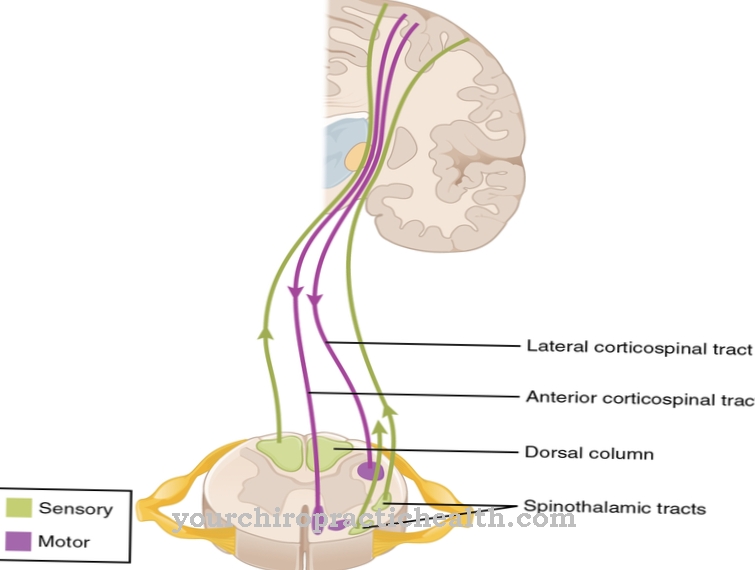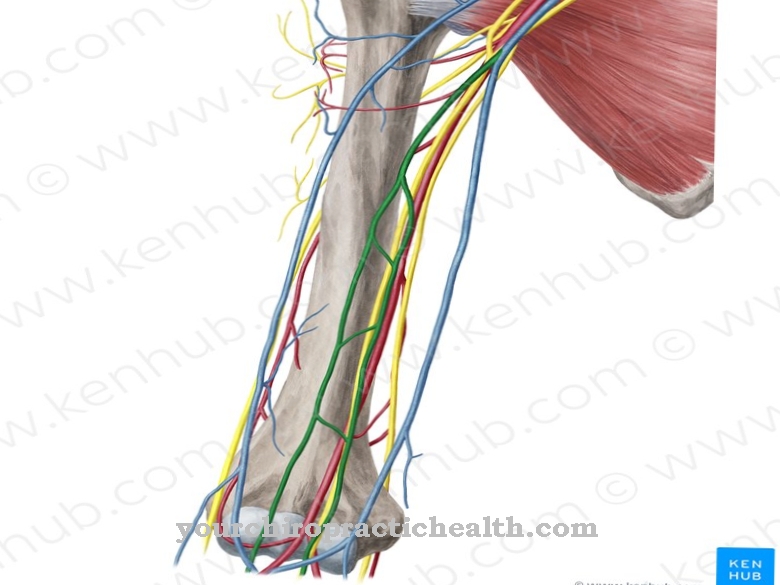In the course of evolution, a skeletal system has developed which not only gives people the stability and mobility for walking upright. The skeletal system comprises an enormous number of bone. This is between 208 and 212 bony parts.
What are bones
The Latin name for bonewhich is customary in medicine is called Os. This term is usually inflected and known in the variations oste-, osteo- or simply ost-.
The entire human bone system is made up of different bones, which are divided into tubular bones or flat bones depending on their structure. In addition, there is a classification of bones on the basis of their formation and shape.
The bones are characterized by an extraordinary hardness and at the same time limited elasticity. This is justified by the specific structure of the bones. The hard segments of the bones consist of a type of tissue that is formed from connective tissue and supporting cells.
Anatomy & structure
Although the bone look visually different, however, they are largely based on the same construction. A connective tissue skin, which is known as the periosteum, ensures that the entire bone substance is held together and that it is also strengthened. This layer covers the so-called bony cortex, which is extremely compact.
Under this substantia compacta is the typical sponge-like structure of the bone. A cavity in which the bone marrow is embedded appears under the cancellous bone. This soft and extremely well supplied bone marrow contains many blood vessels. The bone marrow is surrounded by the endosteum. In the bone, this entire area is known as the medullary cavity. The bone marrow is converted to fat marrow.
On microscopic tissue visualization, the osteoblasts, osteoclasts and osteocytes appear in the bone. These cells make up the bone tissue and are responsible for various tasks.
Functions & tasks
The bone represent a unit with the muscles, ligaments and tendons as well as the articulated connections and can only take over the mobility of the skeleton in this form.
Technically correct, this function of the bones is summarized under the biomechanical processes. Under these conditions, the bones also serve to transmit the forces. The special relief of the bones creates a certain static which gives the skeleton its stability and shape. Amazingly, the bones are subject to morphological changes throughout life, which allow limited adaptability to current requirements.
Under the skeleton of bones there are many vital organs that are embedded and protected. The high concentration of the mineral content in the bones is also a perfect prerequisite against radiation exposure. In relation to the minerals, which are extremely dense in the bones, the tissue takes on a storage function. Within these abilities, the bones also serve to maintain the normal pH value in the blood (buffering).
Without healthy bone marrow, no blood cells could be made. The marrow in the bones is responsible for the fact that different stages of maturation of the red blood cells can be formed. At a certain development stage, these are flushed out of the bones into the bloodstream.
Diseases
It comes to diseases of the bone, then these can lead to severe health impairments with numerous courses. This is based on the fact that the bones have to fulfill some vital functions.
Individual known diseases of the bone can spread to the entire bone system and affect other organ systems. This affects, for example, the so-called genetically determined mutations in the nature of the bones and the increasing ossification of the connective and supporting tissue areas. Another disease of the bones, which is also hereditary, is called an incurable malfunction in the metabolic system of the bones.
In the case of bone marrow edema, the body's own fluid accumulates in the bone marrow so that it is displaced. In addition to these rather complicated clinical pictures, the bones can suffer from more common abnormalities, which in the form of osteoporosis appear almost as widespread diseases. In addition, the bones have metastatic tumors and a breakdown in bone mass as a result of kidney failure. Further diseases of the bones are the vitreous bone disease and the bone inflammation.
Typical & common diseases
- osteoporosis
- Bone pain
- Broken bone
- Paget's disease

























.jpg)


